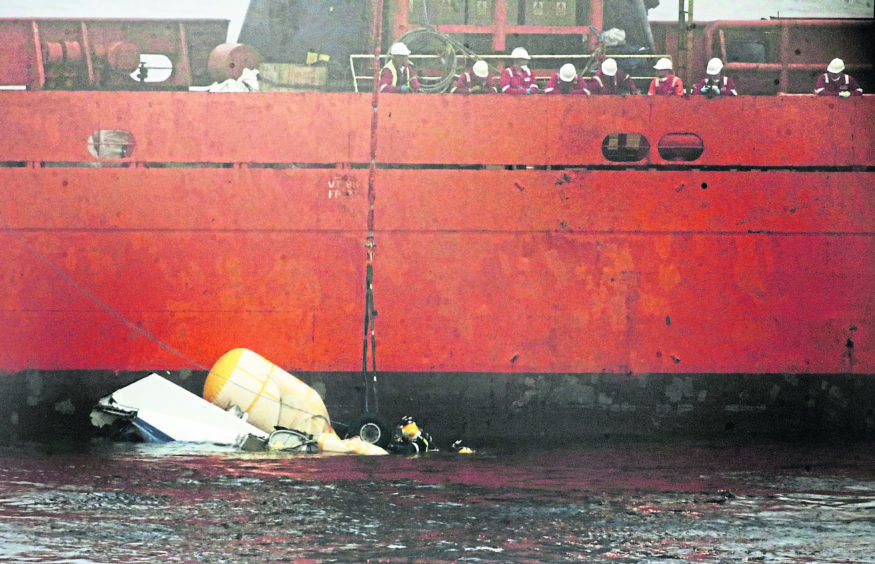
A Super Puma helicopter which crashed into the sea would have sunk – ultimately killing more people – had it not been for the “brave” actions of the co-pilot to deploy floats, a fatal accident inquiry heard.
Four offshore workers died when the helicopter ditched into the water two miles west of Shetland on August 23 2013 – with a fifth victim committing suicide four years later.
Captain Alan Findlay, a helicopter pilot with 38 years’ experience, was a training captain with the operator CHC at the time of the tragedy.
Speaking from Australia, where he now works as a search and rescue helicopter pilot, he said the co-pilot Alan Bell was a hero for his “good presence of mind” in deploying flotation bags just prior to the sea impact.
Mr Findlay said: “He saved people’s lives, effectively, by arming the floats so they would automatically deploy on impact.
“If they had not been armed they would not deploy on impact.
“The helicopter would have immediately sunk on impact.
“It had a very significant effect on the survivability of the crash.”
Mr Findlay said the co-pilot had realised “things were going really badly wrong” and showed the “presence of mind” to ensure the safety of passengers.
As a result of his actions the helicopter, while it overturned and filled with water, stayed afloat.
Even after the crash, Mr Bell deployed life rafts as the commander of the helicopter, Martin Miglans, had suffered serious spinal injuries and had to be rescued.
Sheriff Principal Derek Pyle asked: “He was being professional in doing his job properly?
“His quick thinking? Would you also describe it as brave?”
Mr Findlay replied: “Yes. There was an impending crash. Most people would want to be holding on to something on impact, or looking for an exit.
“But his frame of mind was that he wanted to do something to ensure a very successful water landing.
“He showed great presence of mind.”
Advocate depute Martin Richardson said: “He also took charge in launching life rafts while Capt Miglans was incapacitated?”
Mr Findlay responded: “He did not stop. He continued his duty of care to passengers until he was (rescued) by helicopter. He showed his professionalism.”
He told the inquiry that he had previously done training flights with Mr Bell to “show him the ropes”, and said his level of knowledge was “very good”.
Mr Findlay said a number of major changes were made in the aviation industry following the crash, including regulations relating to flight speed and height on approaches.
The Air Accidents Investigation Branch report into the accident is playing a major part in the inquiry and has described how flight instruments were “not monitored effectively” by the pilots in the moments leading up to the crash.
The AAIB said a lack of monitoring meant a reduction in air speed was not noticed by the pilots and attempts to recover control were too late.
Mr Findlay said, in his opinion, the chief pilot was ultimately responsible for the approach and should have maintained monitoring of instruments relating to speed and height.
He told the inquiry that, as it was foggy, the non-flying pilot would have to keep a visual on outside conditions, and “keep an eye on any runway lights”.
As a result, he said the co-pilot was not able to maintain his concentration on what was happening within the cockpit.
He added: “The commander was in control of the flight and was ultimately responsible for monitoring the instruments.”
Mr Findlay said he remained in contact with Mr Bell following the accident, adding: “I kept him updated on changes made (to regulations) subsequently to the accident.
“I am pleased to say there were a lot of substantial changes. I said (to him) good had come out of this and the world was a safer place.”
Recommended for you
